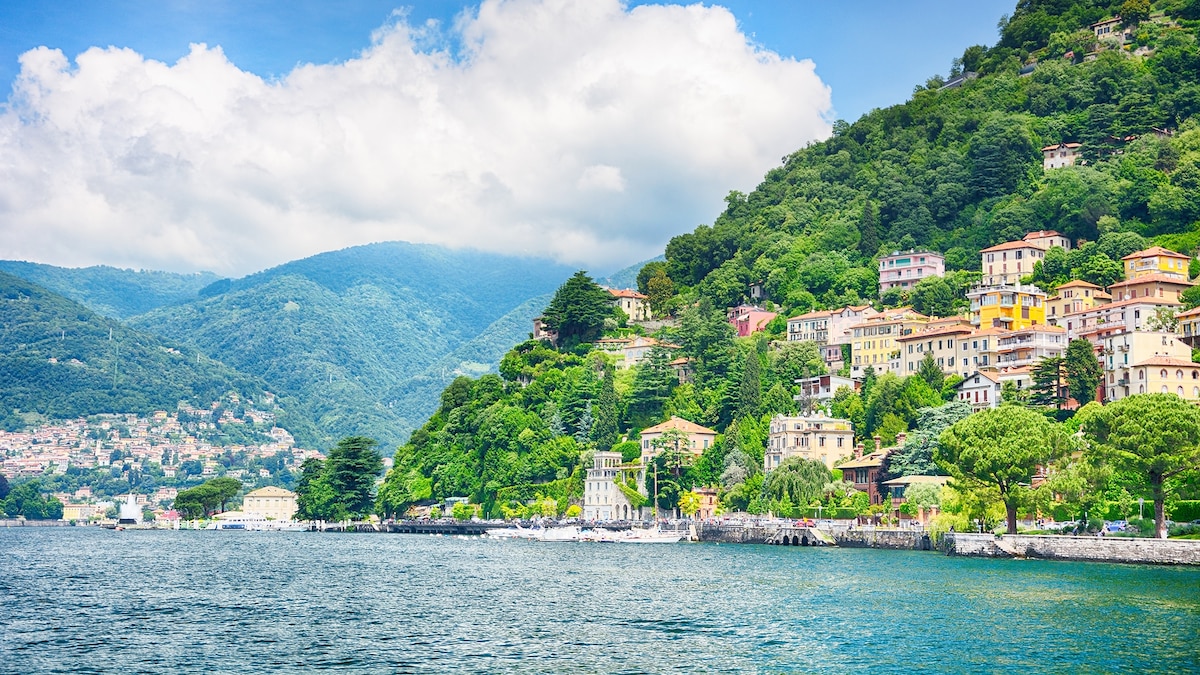A guide to Lake Como’s highlights — villas, promenades and aperitivo spots not to miss
VIDEO
This article was produced by National Geographic Traveller (UK).
Lake Como conveys notions of easy elegance and the Italian art of slow living, and has come to stand for something bigger than it is. Officially called Lario, Italy’s third-biggest lake has been drawing visitors since the 18th century, when it was a popular stop for European nobles on their grand tours. More recently, it stepped into the spotlight as the backdrop for films including Ocean’s Twelve and Casino Royale. But the lake’s prestige dates to Roman times, when Julius Ceasar drained a swamp at its southwestern end, strategically located near Alpine passes, and funded the creation of a city known as Novum Comum.
It laid the foundation for Como, the main hub to this day and the reason why the lake is commonly known as Como. This spring is the best time to visit the city in over a decade, as sections of its waterfront sidewalks, which had been cordoned off for expansion since 2008, are once again open to walkers. The centre is dominated by the azure dome of the Duomo di Como, one of the last gothic cathedrals built in the country. Behind it is Teatro Sociale, and to one side is the shopping street of Via Vittorio Emanuele II. It’s a good place to pick up a souvenir: mulberry trees were planted on Lake Como’s hills in the 15th century, and boutiques like A Picci sell handkerchiefs and scarves using their silk.
Next to the shop, Via Lambertenghi leads to Via Alessandro Volta, named after the physicist credited as the inventor of the electric battery. The townhouse where he was born in 1745 is marked with a plaque, and around it are some of the most coveted addresses of the time. This is not least thanks to their giardini pensili — gardens built on the Roman walls that once guarded the city centre.
Equally evocative is Passeggiata Lino Gelpi, between the lake and shorefront private gardens. The path’s name pays tribute to the 19th-century mayor who reclaimed a strip of land from villa owners to pave Como’s most scenic public footpaths. It’s a front-row spot from which to watch the lake’s seaplanes land, and it’s especially lovely in spring, when wisteria blooms along the banks.
Continue walking along the waterside road for half an hour to Cernobbio, one of the lake’s most popular resorts. Local Comaschi come to eat at Harry’s Bar, in a piazza by the shore; it serves whitefish from the lake, but the pick is the sole meuniere, floured and pan fried to crispy perfection. Alternatively, taxis wind up the hillside to Il Gatto Nero. It serves specialities from the surrounding region, such as ravioli with ossobuco and saffron, and has become popular among visiting celebrities thanks to its view of the lake.
For a different perspective, take to the water. Ferries link Como to the Alto Lago (‘High Lake’), its northernmost shore. But, if budget allows, the transport mode of choice are Riva runabouts. High-end hotels offer private rides on these mahogany speedboats as part of their activity programmes. Otherwise, companies like Como Classic Boats pick visitors up from almost any hamlet with a dock.
Among the most prettiest is Torno, on the western shore, with red-tiled roofs and a waterfront bell tower. It’s opposite Passalaqua; built in the 18th century for a scion of local nobility, this villa was crowned the world’s top hotel by The World’s 50 Best in 2023, a year after opening. A glimpse is all you’ll get, as only guests are allowed in, but as an alternative visit Villa d’Este, the lake’s historic grand dame hotel. Further down the shores, highlights include Villa Carlotta and neoclassical Villa del Balbianello, which juts out on a promontory in Ossuccio.
A former fishing community, Ossuccio is also a gateway to Isola Comacina and UNESCO-listed Sacro Monte di Ossuccio, 14 chapels leading to a hillside sanctuary. From its waterfront, the view is a snapshot of what makes Lake Como so alluring: the unassuming hamlets next to larger-than-life villas, and the green, wooded hills sloping down to the deep-blue water. In the distance, always in view, are the Alps. From the Roman Empire to modern-day Hollywood, it’s a scene that’s charmed through the ages.
3 highlights not to miss in Lake Como
1. Teatro Sociale
Como’s 19th-century theatre has always had a special affinity with the opera. This summer, it’ll join other venues across the country in marking 100 years since the death of Giacomo Puccini with an open-air production of Turandot, the composer’s final masterpiece.
2. Villa Carlotta
The 20-acre botanical garden of Villa Carlotta is a much-loved retreat on the lake. There are monumental trees, a citrus tunnel and a path among the ferns, but it’s most famous for its azaleas, which bloom into full cushions of red, white and pink for a few weeks each May.
3. Isola Comacina
The lake’s only island is mostly uninhabited, but its trails lead past olives, lindens and laurels, as well as houses for short-term artists in residence. Every June, the popular San Giovanni Festival reenacts a fire that devastated the island in the 12th century with a red-tinted firework display.
Various airlines fly direct to Milan from UK cities including London, Manchester and Edinburgh (from 2h to 2h30m). From there, it takes around an hour to reach Como by taxi.
Doubles at Albergo Terminus in Como from €277 (£237).
To subscribe to National Geographic Traveller (UK) magazine click here. (Available in select countries only).



